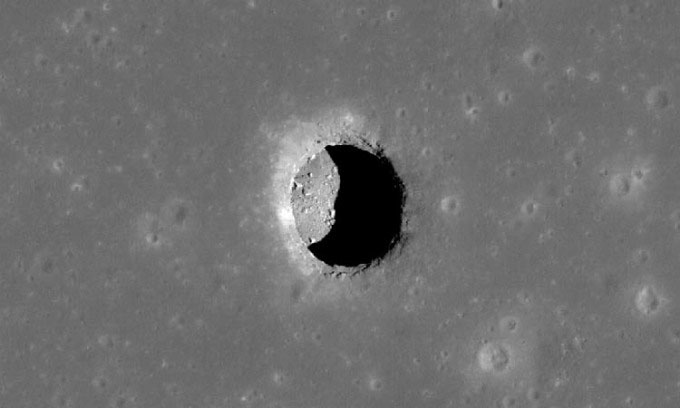Using data from the Lunar Reconnaissance Orbiter (LRO), NASA experts have found that the temperature in a depression in the Mare Tranquillitatis region on the Moon is only about 17 degrees Celsius.

Depression in the Mare Tranquillitatis region on the Moon. (Photo: NASA).
The Moon is not a hospitable or ideal place for life. Its surface is a barren desert, more desolate and dry than any location on Earth. The Moon is covered by a layer of sharp, clingy dust, exposed to intense radiation, micro-meteorite showers, and temperatures that fluctuate from 127 degrees Celsius during the day to -173 degrees Celsius at night.
Several years ago, NASA’s Lunar Reconnaissance Orbiter (LRO) discovered promising hiding places for future Moon explorers. These are deep pits on the surface that appear to lead down to caves and lava tubes. They could be large enough to house entire cities and even serve as preservation sites for plant and animal samples, much like Noah’s Ark. These caves would provide natural shelter from radiation and micro-meteorites.
In a new study published in the journal Geophysical Review Letters on July 8, NASA scientists found that lunar pits could also stabilize temperature. They used data from Diviner, a thermal camera on the LRO, to calculate the temperature inside a 100-meter deep lunar pit in the Mare Tranquillitatis region.
The research team found that in the areas that are always in shadow, the temperature changes very little over the course of a long lunar day, fluctuating around a comfortable 17 degrees Celsius. Essentially, one could stroll around down there wearing only a light jacket.
Any future base on the Moon will need careful climate control, but this new finding suggests that the control system may not need to work too hard. These caves could play a critical role in returning humans to the Moon, as early as 2024 according to NASA’s plans.
“Humans evolved while living in caves, and now we may return to caves when living on the Moon,” stated David Paige, a co-author of the study.


















































